Uncovering History: A Day of Reflection at the Nuremberg Trials Museum
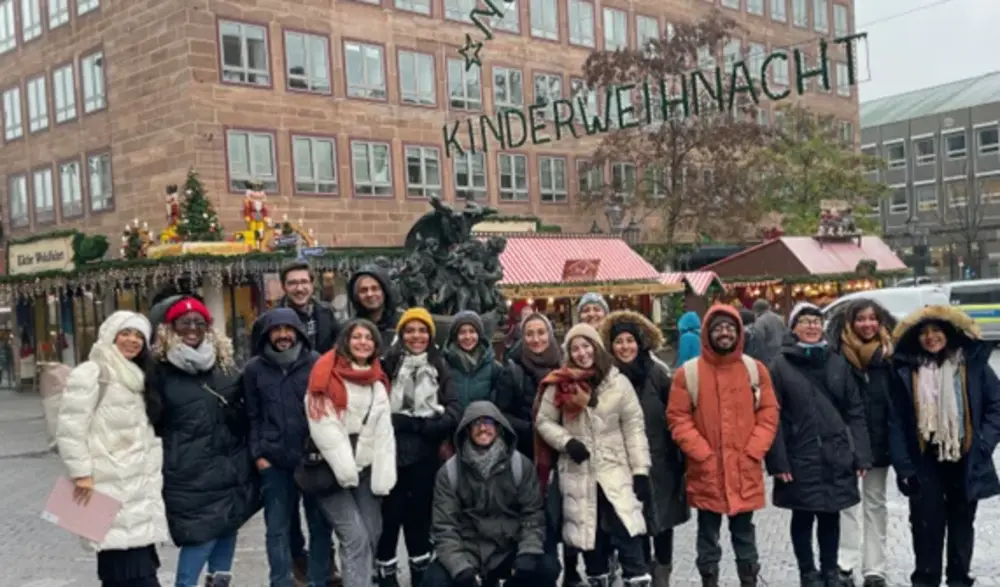
On December 1st, the Introduction to Conflict Studies class had its first field trip. Guided by our enthusiastic lecturer, Dr. Alejandra Ortiz Ayala, we embarked on a journey to Nuremberg to visit the Memorial Trials Museum. We gathered early in the morning at Erfurt Hauptbahnhof, ready for a day of discovery and reflection.
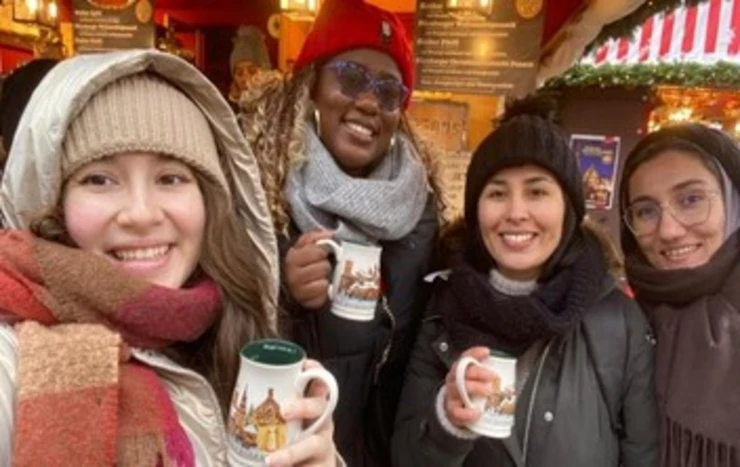
As we arrived in Nuremberg, the city's rich history unfolded before us. The blend of medieval and modern architecture provided a picturesque backdrop for our exploration. Despite the snowy day, we decided to walk to the Nuremberg Christkindlesmarkt, a beautiful Christmas market where the festive spirit was very present as it was the first opening day of the market. The students got some free time to drink some gluhwein, eat, and explore.
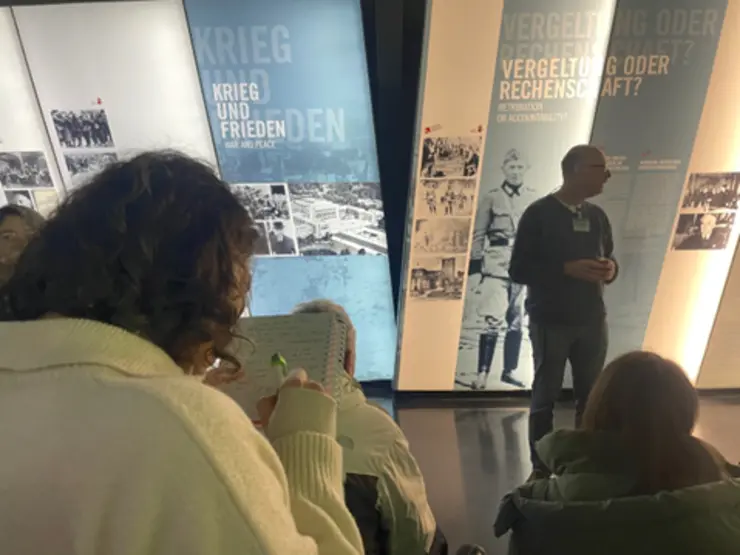
After enjoying the festive atmosphere, we made our way to the Nuremberg Memorial Trials Museum. Led by our knowledgeable guide, we delved into the exhibits that chronicled the trials, the challenges of establishing a trial in that specific historical moment, the pursuit of justice, and the complexities of holding individuals accountable for crimes without a previous legal framework. It was a journey through history that made each of us learn and reflect.
At the end of the tour, a film projection transported us back to the era of the Nuremberg Trials. We were in the room where the trials happened, and despite its renovations, with the help of new technology, we could see the real dynamic of these trials and perceive their intensity. Being in this room helped us to reflect on the gravity of the events that unfolded within those very walls and also on different conflicts that still persist.
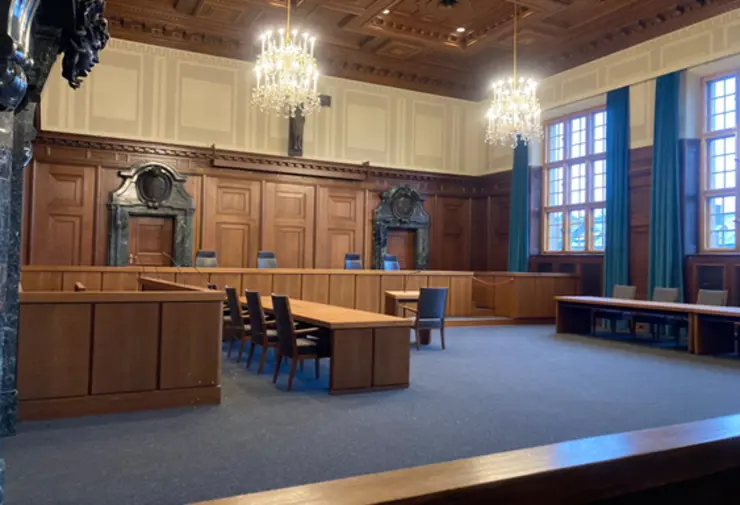
For the student Manuel Mollenhauer being in the actual courtroom evoked an odd feeling, and as the tour guide unfolded the establishment of the court, Manuel likened it to a peculiar start-up. The creation of new rules, determining the roles of jurors from different nations—building an international court from scratch. The immersive video installation vividly brought the courtroom back to life, but what resonated with Manuel were the future cases presented, particularly those from the International Criminal Court (ICC), addressing atrocities like Srebrenica and Rwanda. This part of the experience made him proud that people could unite to establish a place of accountability based on the lessons from dark times. However, Manuel also acknowledged that quotes from individuals involved in today's conflicts underscored the ongoing challenges, emphasizing that we still have a long way to go in achieving justice and resolution in contemporary conflicts.
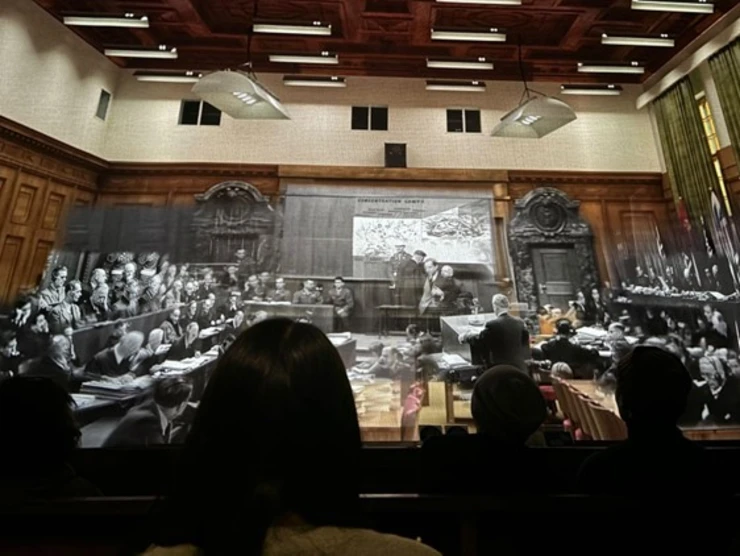
At the end of this visit, student Mohammad Abbasi shared his perspective on the importance of international justice: "When I entered the court, a spark struck in my mind. If the Nazi leaders knew that an international criminal court might put them on trial, would they have started the world war? I think one of the most effective ways to prevent international or even domestic disputes is the existence of a supra-governmental international judicial system." Mohammad's contemplation on the role of an international court in preventing conflicts set the tone for our day ahead.
Similarly, Sofia Navarro reflected on conflicts and guilt: "Visiting the Nuremberg Trials gave me a new perspective on international justice. Learning about the origins and development of the trials allowed me to think about the processing of conflicts, the question of guilt and dealing with the consequences, and see how countries deal with this differently." Sofia's insight reminded us of the importance of understanding historical events to shape our views on justice and conflict resolution.
Nat Isaza Ibarra brought a thought-provoking perspective to our visit to the Nuremberg Memorial Trials Museum. As she sat in the courtroom where justice was administered for the perpetrators of genocide, her reflection resonated with a sense of concern about the current state of affairs in the Middle East. Nat expressed the view that we seem to have learned little from the mistakes of the past. She pointed to the trials as a potential spectacle, as mentioned by our tour guide, suggesting that the victorious powers of the Second World War may have used the judicial process to veil their desire for retribution. Nat's contemplation added a layer of skepticism and critical analysis to our reflections on the historical events we witnessed.
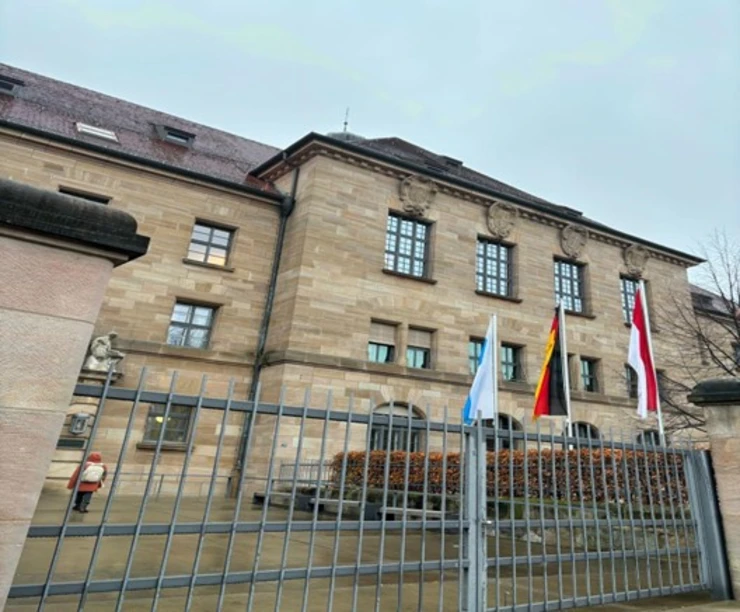
Dr. Alejandra also shared her insights; for her, “This trial changed the way we perceive justice in contemporary conflicts. It allowed us to reimagine ways to overcome violence, placing the voices of the victims at the center and choosing a pathway different from seeking revenge against those who committed atrocities. By holding individuals accountable for the crimes committed during the war, the trials aimed to bring a sense of justice to the victims and their families. In this way, justice and reconciliation became key components of transitional justice processes. Thus, the Nuremberg Trials established legal precedents for prosecuting individuals for war crimes, crimes against peace, and crimes against humanity. The trials served as a platform for documenting and presenting evidence of the atrocities. This documentation played a crucial role in creating a historical record that helps society understand the mechanisms and logic that make such atrocities possible. The trials reminded us that we seek justice for the reparation of victims, reconciliation, and as a mechanism to prevent repetition”.
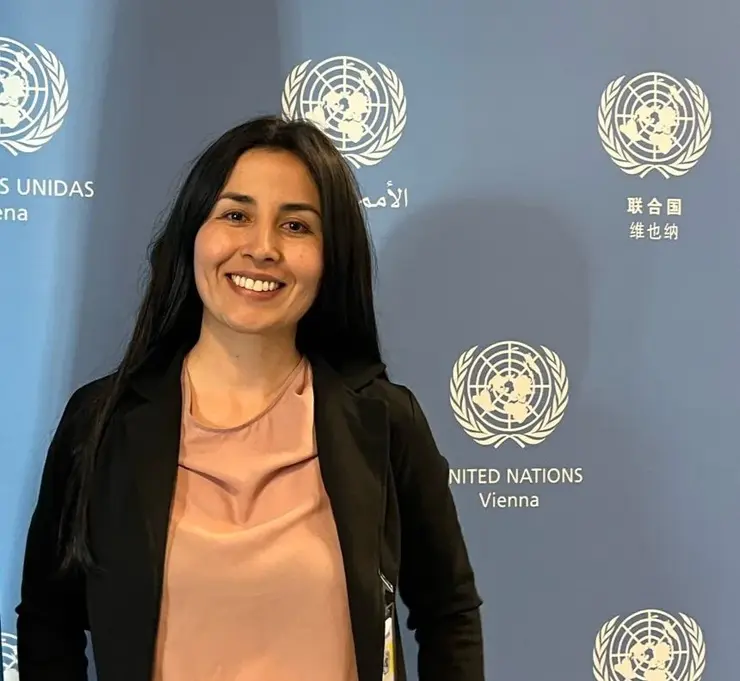
Nancy Apraez is a student at the Willy Brandt School. She has a Bachelor’s Degree in Law and has worked in the legislative branch in Colombia. She is interested in Conflict Studies and Development.
~ The views represented in this blog post do not necessarily represent those of the Brandt School. ~